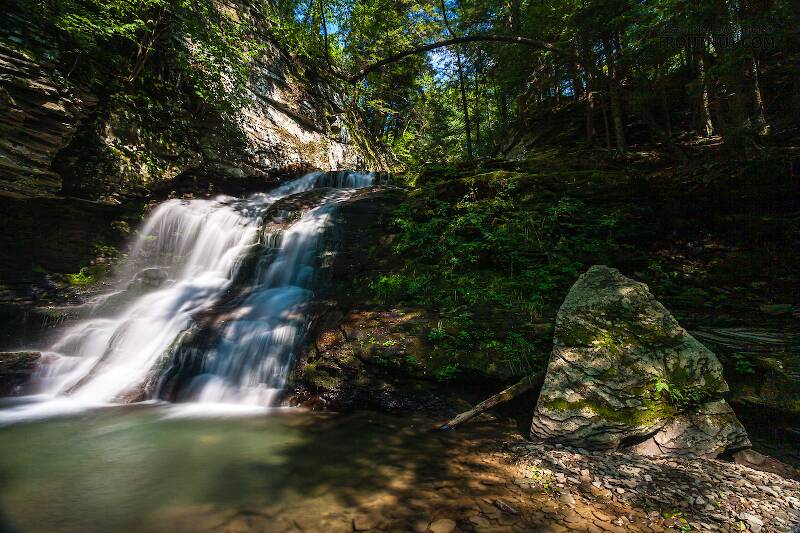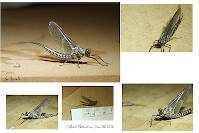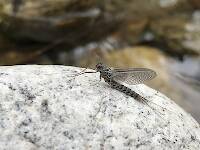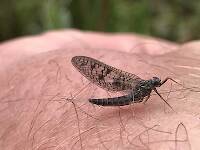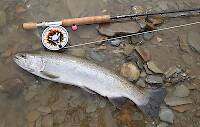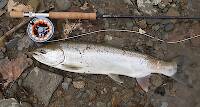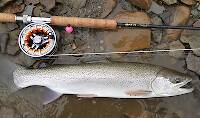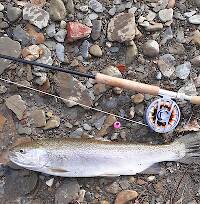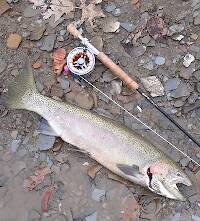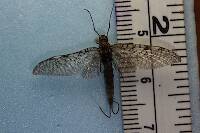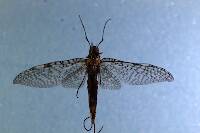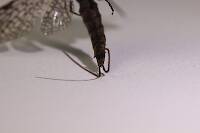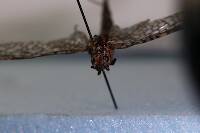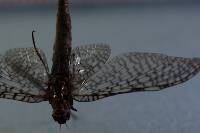
Blue-winged Olives
Baetis
Tiny Baetis mayflies are perhaps the most commonly encountered and imitated by anglers on all American trout streams due to their great abundance, widespread distribution, and trout-friendly emergence habits.
Featured on the forum

Nymphs of this species were fairly common in late-winter kick net samples from the upper Yakima River. Although I could not find a key to species of Zapada nymphs, a revision of the Nemouridae family by Baumann (1975) includes the following helpful sentence: "2 cervical gills on each side of midline, 1 arising inside and 1 outside of lateral cervical sclerites, usually single and elongate, sometimes constricted but with 3 or 4 branches arising beyond gill base in Zapada cinctipes." This specimen clearly has the branches and is within the range of that species.

Troutnut is a project started in 2003 by salmonid ecologist Jason "Troutnut" Neuswanger to help anglers and
fly tyers unabashedly embrace the entomological side of the sport. Learn more about Troutnut or
support the project for an enhanced experience here.
This topic is about the Mayfly Species Baetis brunneicolor
This is the largest common species of Baetis on our trout streams, and it can hatch in incredible numbers, drawing impressive rises of selective trout.Anglers may have read in books about Baetis hiemalis, which is now a synonym of Baetis brunneicolor. It appears to have been a name for the fall-hatching brood of this species, which was reported to prefer slow water and weedy habitat instead of the gravelly riffles of the early summer brood.
Admiralb
Posts: 1
Posts: 1
Admiralb on Sep 28, 2013September 28th, 2013, 6:17 pm EDT
I hosted two visiting delegates to the T.U. National Convention in Madison, WI. on September 25, 2013, taking them to the Big Green River in Grant County near Fennimore. There was a high overcast in the morning, and these mayflies [which I merely called "BWO's" and imitated with #16 parachute dries - thin olive bodies, gray wing posts and dun parachute hackle] - were active. Both of my guests raised browns fishing a gray nymph behind a #16 parachute dry BWO. As long as my flies catch fish, I don't need to be a detailed entomologist. Nevertheless, I do sincerely appreciate the detailed scientific info, because it helps me focus my flytying and fly selection. Thank you.
Entoman on Sep 30, 2013September 30th, 2013, 7:51 pm EDT
Welcome, Admiralb! I agree that Jason (Troutnut) has provided a very helpful resource for anglers.
"It's not that I find fishing so important, it's just that I find all other endeavors of Man equally unimportant... And not nearly as much fun!" Robert Traver, Anatomy of a Fisherman
Quick Reply
Related Discussions
Topic
Replies
Last Reply
4
Jun 17, 2020
by Leskorcala
by Leskorcala
1
Jan 28, 2018
by Taxon
by Taxon
3
Jul 28, 2013
by Martinlf
by Martinlf
0
May 27, 2018
by Leskorcala
by Leskorcala

